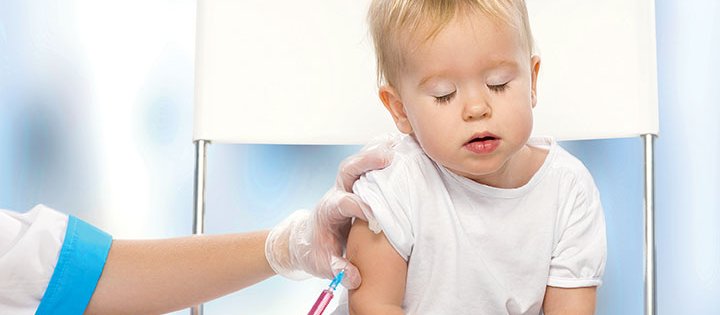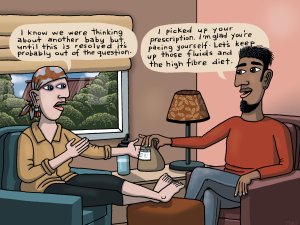Academic pharmacist Nataly Martini highlights the importance of understanding non-Hodgkin lymphoma and pharmacists’ roles in managing this condition
Low vaccination rates prompt fears of severe measles outbreak
Low vaccination rates prompt fears of severe measles outbreak

Health experts say a big effort is needed to turn around plummeting childhood vaccination rates, which they say are now so low the country is vulnerable to an outbreak similar to the devastating measles epidemic in 2019.
Nurse Laura Williams gives a Māngere College student a measles vaccination. In some areas, measles vaccination rates for Māori and Pasifika have fallen to as low as 32 percent. Photo: RNZ / Rowan Quinn
That outbreak infected more than 2000 people, and hospitalised more than 700 - mostly children in South Auckland. It was then exported from this country to Samoa, where it killed more than 70 people, mostly children.
Last week, the World Health Organisation warned that first-dose vaccinations for measles were at the lowest in more than a decade. Experts here are warning that it's a similar story in New Zealand.
In some areas, rates for Māori and Pasifika have fallen to as low as 32 percent, leading to fears a devastating outbreak is just around the corner.
Manukau family doctor and chair of the Pasifika GPs Network Dr Api Talemaitoga said he was gravely worried.
"It's significant," he said, "and it just means the likelihood of catching those childhood illnesses [increases]. We all remember what the measles did here in South Auckland and then in Samoa."
A review of that 2019 outbreak, which affected mostly Pacific and Māori communities - found it was largely preventable, due to inadequate public health, poor planning and a lack of vaccine catch-up campaigns.
Since then, the rates for childhood vaccines - which include measles, mumps and rubella - have only fallen further.
"What I'm scared of is that we are doing all of this and kind of just walking with our eyes closed," Talemaitoga said.
"Please Lord, let there not be another measles outbreak because we have neglected to get our MMR boosters up to scratch."
Auckland University paediatric researcher Dr Anna Howe said overall coverage rates had fallen from nearly 80 percent in 2017, to just 65 percent.
She also warned that a significant gap was opening between Māori, Pasifika and the rest. In three years, she said, Māori rates have fallen from about 70 percent to 45 percent.
In Counties Manukau, Talemaitoga said that was as low as 32 percent.
Howe said while the coronavirus pandemic had accelerated the fall, it is not entirely to blame, with the downward trend starting well before Covid-19 reached these shores.
"We have actually started to see a little bit of a decline before we went into the pandemic, and so we've gone from sort of having relatively good coverage to starting to drop off and then now we sort of have this pandemic hangover," she said.
And with the border fully reopening next week, Howe said this country - with a health system already under strain - is particularly vulnerable.
"We're absolutely terrified that that's going to happen again, especially given that the low coverage for childhood immunisations isn't New Zealand specific," Dr Howe said.
"It's an international problem. So that means that there's going to be likely a high volume of measles circulating and it coming through the border potentially."
Howe says there are many reasons for why rates have fallen so much, but she was confident lessons have been learned from 2019 and that the country was better prepared should it arrive.
The head of Hutt Valley Māori health provider Kōkiri Health, Teresa Olsen, has also noticed a drop.
She said there were the well-canvassed issues of mistrust and neglect from the health system around vaccinations.
But, ultimately, it could also be put down to a surge in poverty in recent years.
"A whole lot of them are living in circumstances which are not great, so they have other priorities," Olsen said.
"Their priorities are not getting their children vaccinated. Their priorities are making sure that their whānau are fed. Because for a whole lot of them it's just hard living day-to-day."
Dr Talemaitoga said many whānau were struggling to get to a GP, if they even had one. Hours were often inaccessibly for whānau who may only have one car, or work multiple jobs, or have no spare income.
But the self-described optimist said he was confident lessons have been learned from 2019, and that what worked well in the Covid-19 vaccine rollout can help here, too.
"I just think it's a combined effort now. What is encouraging is we got the rates right up for Māori and Pacific, for the whole country. We can do it again."
It's something Kokiri Health is doing. Teresa Olsen said it was pivoting its pop-up Covid vaccine clinics to offer flu and other childhood vaccines with some success. They were engaging with whānau they've built relationships with.
But she also warned the task of boosting lagging vaccination rates will not be an easy one. People have switched off, she said, and there is a mountain of vaccine misinformation to confront.
"Our whānau are in information overload and are just switching off as well because it's all too much. Then that makes it even more difficult when we're trying to address all the issues around childhood immunisation as well."
The government said a push is underway to increase the numbers, using lessons from the Covid rollout and the 2019 outbreak to get support to Māori and Pacific providers and communities.
It's something Api Talemaitoga said he will continue to push for.
"People like me need to continually remind the system, 'no that is not going to work', this is how you need to do it for Pacific, for Māori, for disability, for other populations of high health needs.
"We know what works. We can never got back to the generic one size fits all."
For more news from around the country go to RNZ





